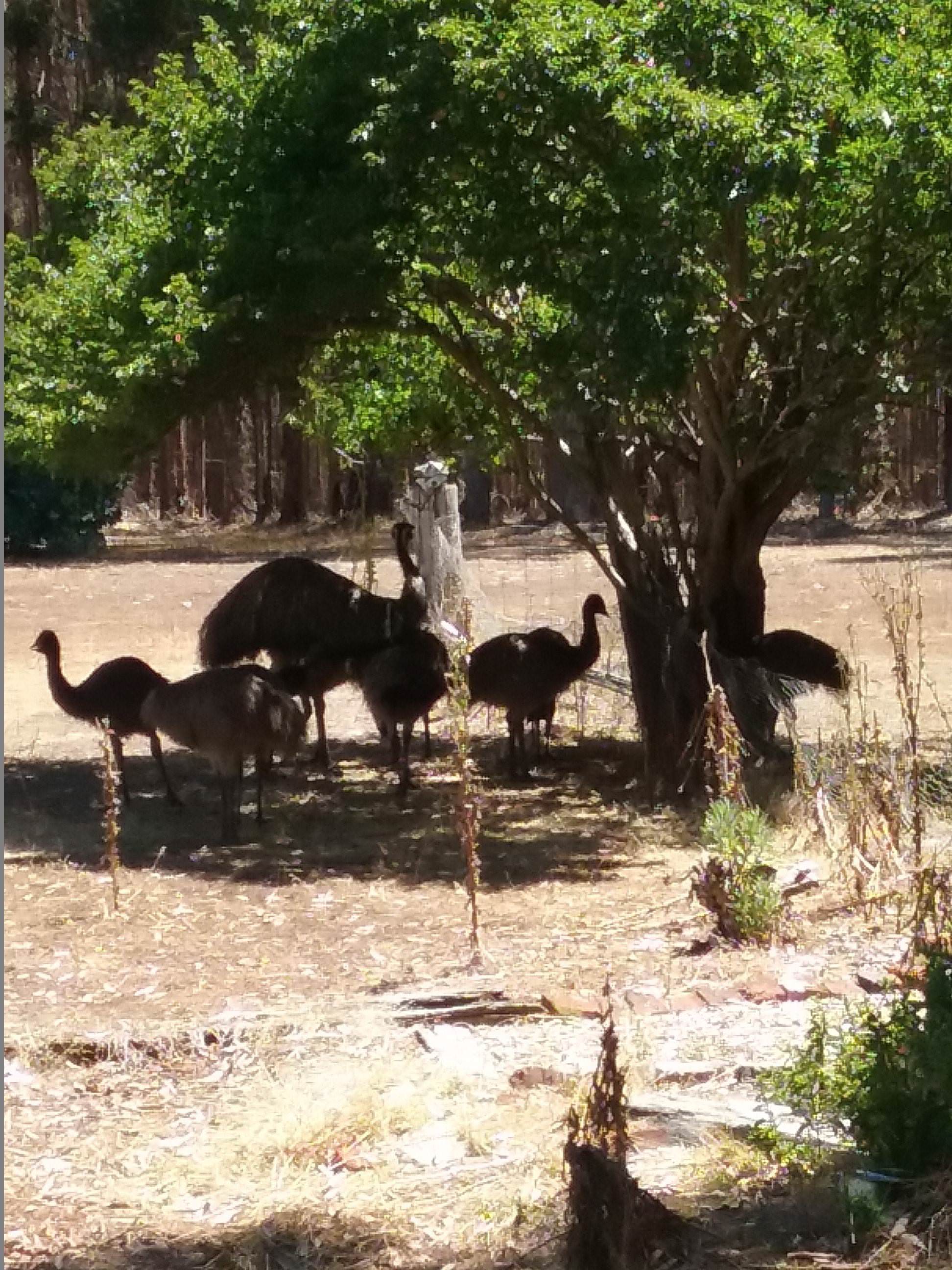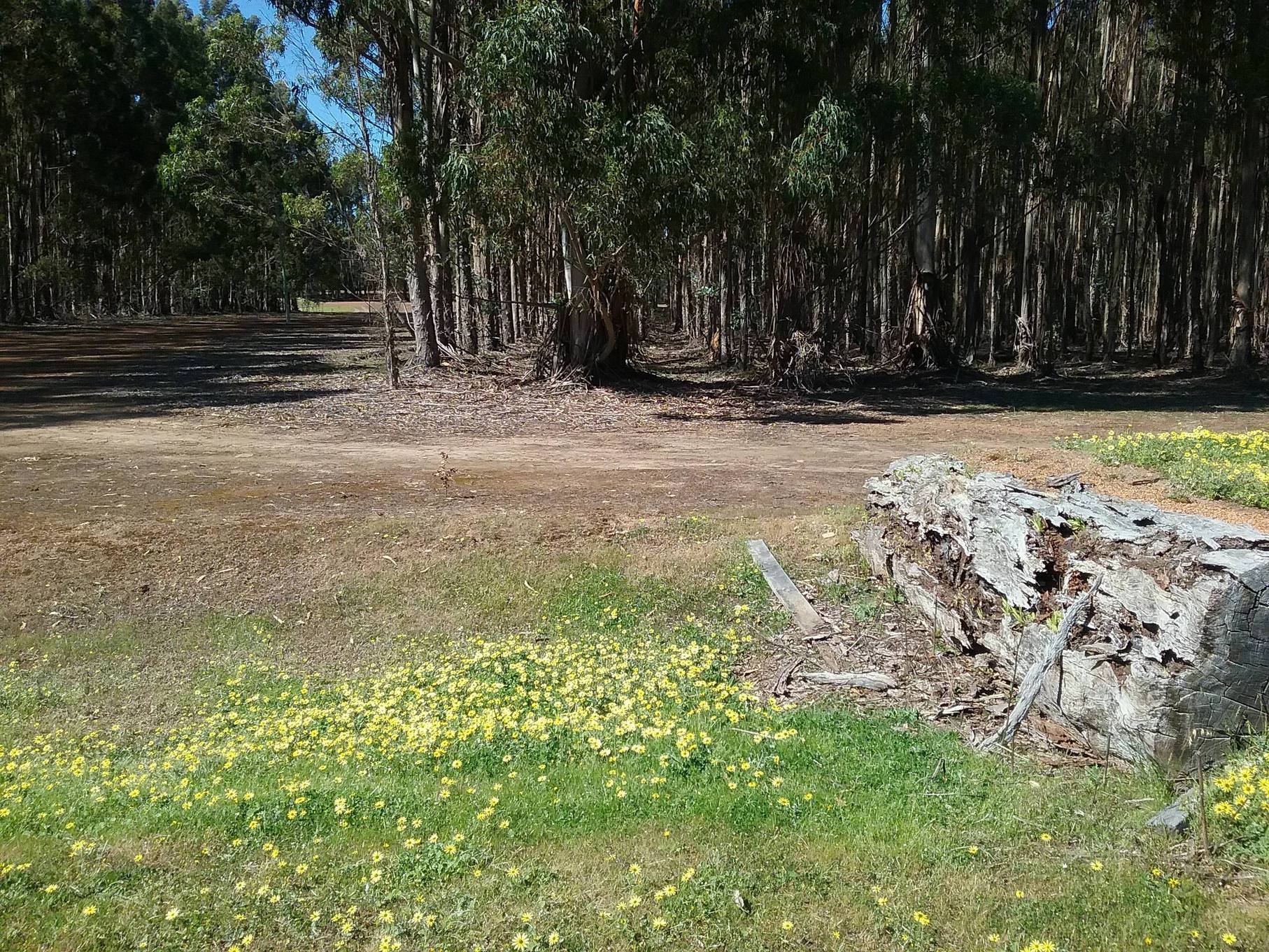- Nov 9, 2013
- 2,197
- 2,930
- 371
'I've got a big apple tree that extends over the run and drops apples, but I might look into some other fruit trees too.'
Random Notes
Emus don't seem able to hold down a large piece of food -- like an apple -- with their foot while they tear at it.
They love stone fruit -- except peaches, which are too big to swallow whole. So, plums, apricots. Figs also. Grapes they love.
And it's not just a fresh-food thing. The foraging, the 'jerk-n-snatch,' is, I am convinced, an important part of physical development. Swarbrick suggests hanging bunches of greens for captive birds to tear at. It's common for me to hear adult emus -- tame and wild -- crashing enthusiastically around in the fig tree, and in the bush that supports the feral grape vine.
And . . . the presence of shrubs and trees contributes to defusing conflict. Less dominant birds want to be out of the line of sight of the dominant birds.

Here is a wild male -- Eric -- with his clutch (of 9), waiting for plums to to be knocked down by the parrots foraging overhead. [In my photos, you can always judge the age of the chicks by the season the photo is taken. These aren't second-year chicks. So, if they are eating plums, then it's early summer. Thus, they are about four months old.]
Finally: readers, dig the correlation between moisture and fresh food (and this applies to the kangaroos as well). Emu life in the wild pivots on water and food. Now, anywhere there is boggy ground or residual water of any other kind (like wetlands here in rothschildi territory), that is where the last bit of 'fresh pick' will be. And emus relish this. They will travel miles to get to it.
So the greenery that your pet emus will enjoy absolutely the most is that last little bit of green they can scavenge from near a water trough, or on the shady side of a building in late spring, or -- ??. It's at this time of year that you observe them shifting from 'cropping' -- the sideways tearing motion of the beak used to shear off mouthfuls of grass -- to pecking/jerk-n-snatch, which they begin using when the green grass is gone, and they start on the flowers and seeds.
[Wow! I haven't written notes in years!]
Random Notes
Emus don't seem able to hold down a large piece of food -- like an apple -- with their foot while they tear at it.
They love stone fruit -- except peaches, which are too big to swallow whole. So, plums, apricots. Figs also. Grapes they love.
And it's not just a fresh-food thing. The foraging, the 'jerk-n-snatch,' is, I am convinced, an important part of physical development. Swarbrick suggests hanging bunches of greens for captive birds to tear at. It's common for me to hear adult emus -- tame and wild -- crashing enthusiastically around in the fig tree, and in the bush that supports the feral grape vine.
And . . . the presence of shrubs and trees contributes to defusing conflict. Less dominant birds want to be out of the line of sight of the dominant birds.

Here is a wild male -- Eric -- with his clutch (of 9), waiting for plums to to be knocked down by the parrots foraging overhead. [In my photos, you can always judge the age of the chicks by the season the photo is taken. These aren't second-year chicks. So, if they are eating plums, then it's early summer. Thus, they are about four months old.]
Finally: readers, dig the correlation between moisture and fresh food (and this applies to the kangaroos as well). Emu life in the wild pivots on water and food. Now, anywhere there is boggy ground or residual water of any other kind (like wetlands here in rothschildi territory), that is where the last bit of 'fresh pick' will be. And emus relish this. They will travel miles to get to it.
So the greenery that your pet emus will enjoy absolutely the most is that last little bit of green they can scavenge from near a water trough, or on the shady side of a building in late spring, or -- ??. It's at this time of year that you observe them shifting from 'cropping' -- the sideways tearing motion of the beak used to shear off mouthfuls of grass -- to pecking/jerk-n-snatch, which they begin using when the green grass is gone, and they start on the flowers and seeds.
[Wow! I haven't written notes in years!]
Last edited:



 Do you have anymore pics of emu poop?
Do you have anymore pics of emu poop?




